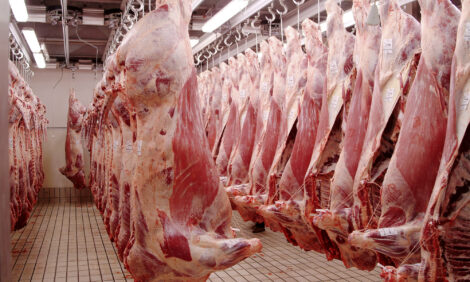



Proper Injection Sites Improve Beef Quality
US - Injection site blemishes have been a costly problem for the beef industry for many years. However, the Beef Quality Assurance Program has helped improve on this.The Beef Quality Assurance Program started in 1990 to unite animal scientists, veterinarians, feed suppliers and animal health companies with beef producers and encourage them to use the latest science and technology to improve beef quality, wholesomeness and safety.
Today, 98 percent of the cattle going through feedlots and 90 percent of the cattle on farms and ranches are from states with BQA programs.
Ryan Ruppert with the producer education division at the National Cattlemen's Beef Association said that injection site lesions were found on 22.5 percent of all beef carcasses tested during the 1991 audit, but in both the 2000 and 2005 audits, that number had decreased to 2.5 percent.
"We are pleased that we have seen a 20 percent reduction in injection site blemishes, but we still need to reduce that number even more," he said.
The 1991 National Beef Quality Audit concluded the industry lost an average of nearly $280 in quality defects on every fed animal marketed. The majority of this loss was due to excess fat, lack of marbling and other carcass defects, including injection site blemishes.
Results from the 2000 audit showed that cattlemen have taken on the challenge of improving the injection site problem. In 2000, 97.5 percent of top sirloin cuts were free of injection site lesions compared to only 78.7 percent in 1991.
"While the progress is admirable, the goal is still to have 100 percent lesion free product," said Hilton. "As a national identification system evolves, cattle will be able to be traced to the herd of origin. Cattle without lesions could garner a premium while those with lesions will be discounted."
Improper injections can lead to trimming and discarding of expensive cuts. The current costs for these trimmings can be as much as $40 per head, according to Hilton.
Source: Journal


